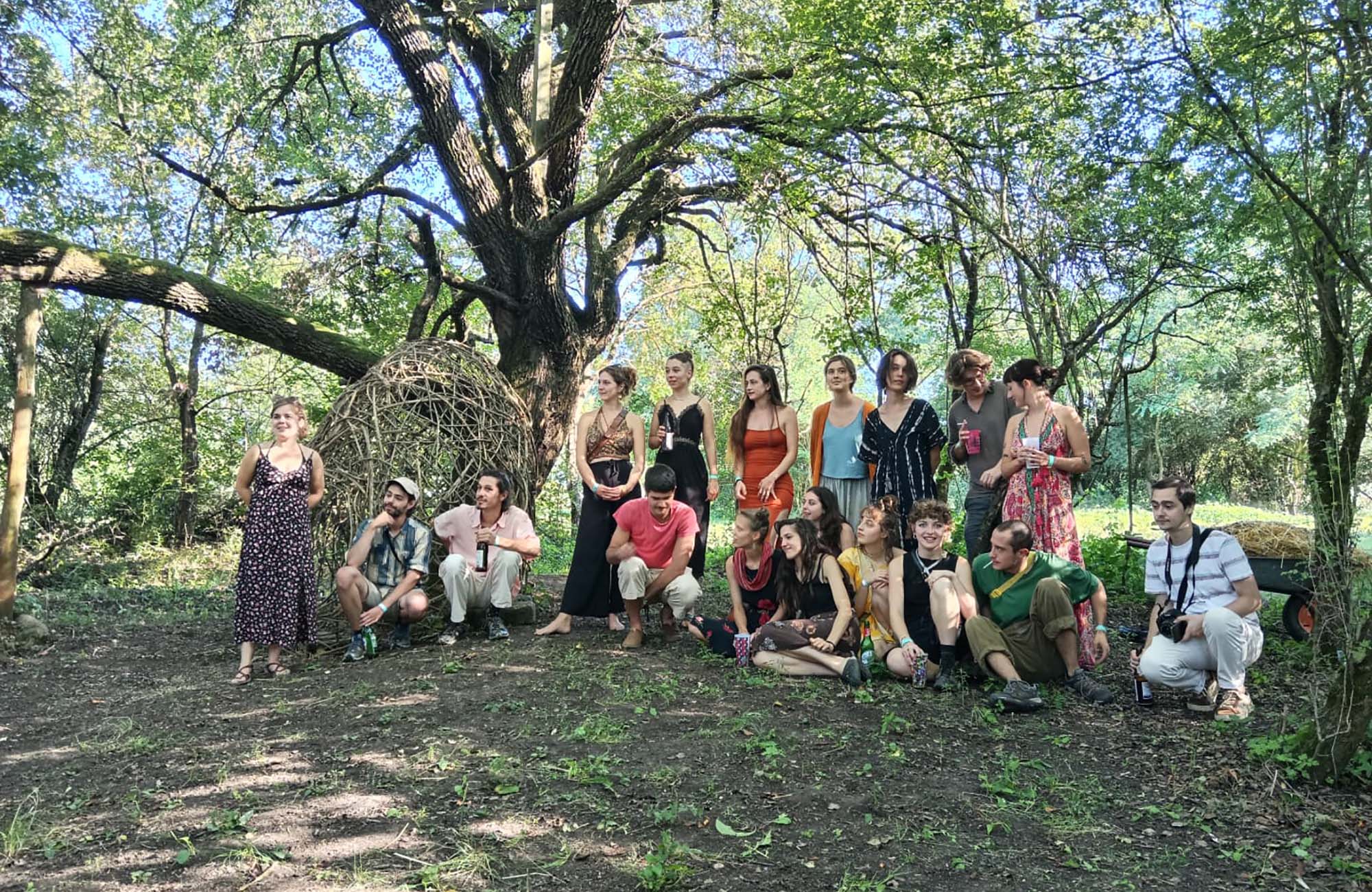
Long live exile!
Report from the III. Magyarkút Art Residency
Clouds of expanding foam, wild boar seedlings and a ten-day flood – the third season of the Magyarkút Art Residency has come to an end. The project is a self-organised art camp in the Danube Bend in the premises of the Home of Art Magyarkút. It all started in 2020 by students of the Budapest University of Fine Arts and now has expanded with international members. The art camp, which took place in August 2023, consisted of a two-week intensive all-artistic creative process and it ended with a public open-air exhibition and a two-day festival. Participants included sculptors, printmakers, video artists, painters and curators, as well as movement and art therapy practitioners. The project aimed to create free, nature-based creative work based on shared community knowledge.
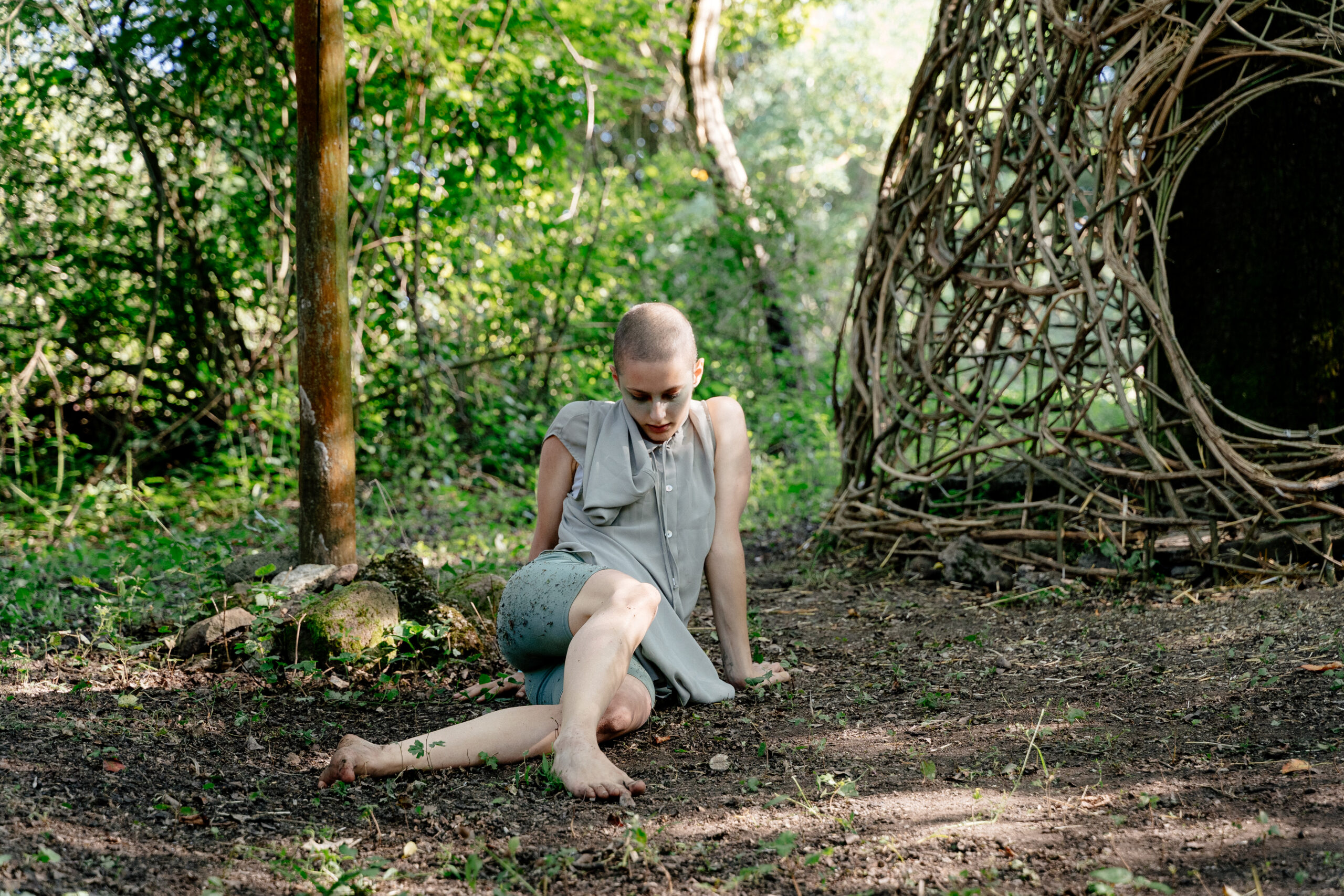
The idea of the artists’ colony was developed three years ago, at the initiative of Lisa Glauser, a sculpture student at the Hungarian University of Fine Arts also supported by other students of sculpture, painting and art theory. The fundamental motivation was to establish an independent creative network that is free from the constraints of the university. The covid-induced closures, resulting in the lack of studio space, made the idea of working together outdoors even more attractive. During the ten-day art residency, we navigate our experiences creating alongside nature and the people present at the residency. The first camp was organised around the theme of creation stories, our main goal was to create individually in the inspiring environment of Magyarkút, deeply connected to nature.
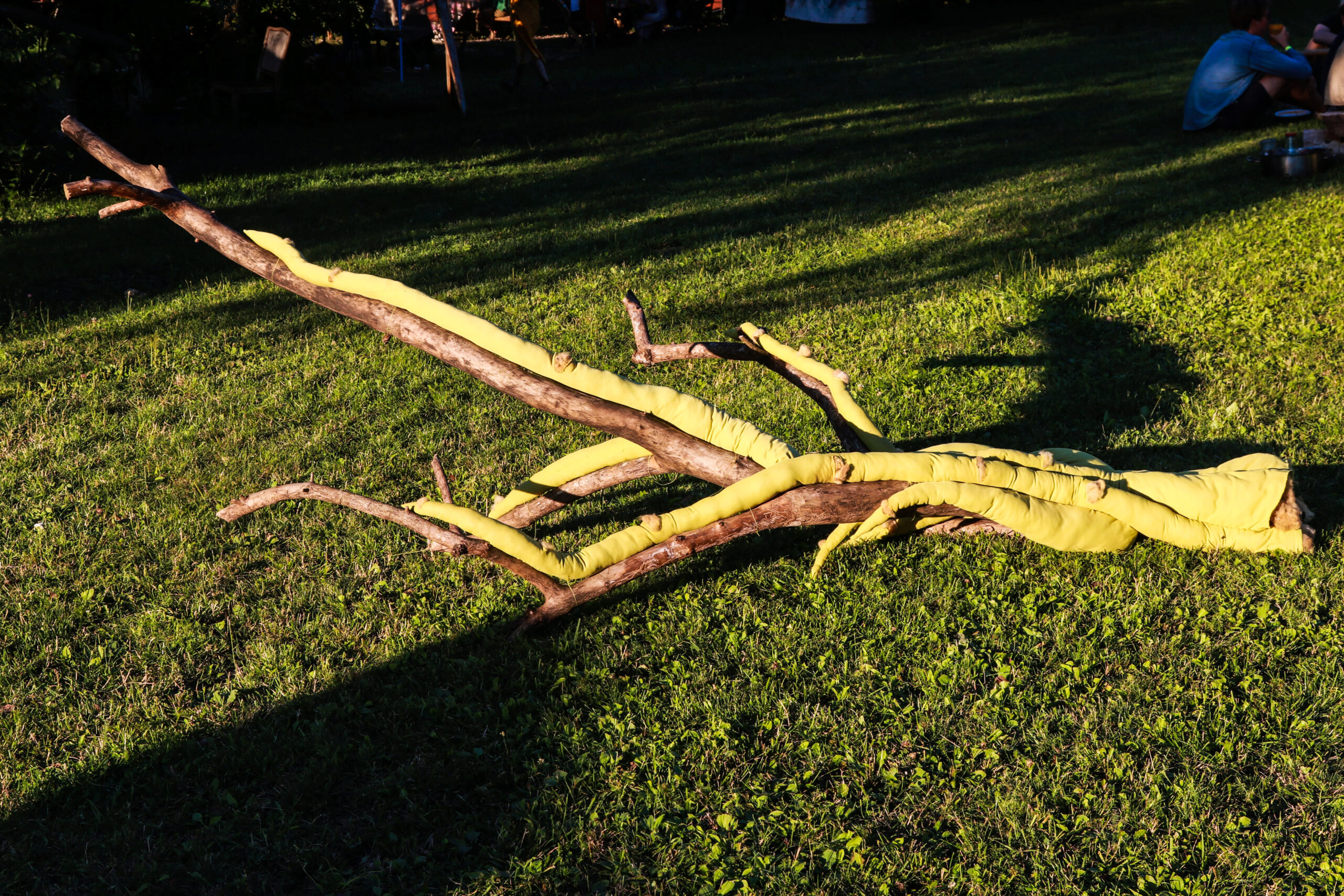
The last two art camps were attended not only by students of Fine Arts, but also by foreign artists who had met the organisers on their international study trips – we now have Italian, French, British, Polish and Lithuanian participants. Although individual work has remained a priority, we have also tried to place as much emphasis as possible on community and co-production: to create opportunities for knowledge sharing and to develop as a group, this year we chose the theme ‘Symbiosis’.
It is an interesting experience to see what this place can do to you. We all felt the healing, calming effect of getting out into nature: a quiet farmhouse on a hilltop surrounded by woods, away from the hustle and bustle of the city: where two steps away a small spring and stream flows, where the sight of a rainbow can be a conversation topic for days, where every sunset is heartbreakingly beautiful.
Where the scheduled opening of an exhibition is shaped by when the sun shines as it should. Where you have to go to a certain spot on the small terrace for almost non-existent internet coverage and reception, but perhaps it’s easier to cut yourself off from the world with noble simplicity. Where there is room for retreat, for solitude, but also where everyone is immediately available for any kind of help or community activity. Where there is something to be done to make self-sufficient community life really work, and where everything is the result of some kind of collaboration: to be able to eat, to have the washing up done, to have all the ingredients for cooking, to have the interior soundproofed for the peace of mind of the neighbours, to have enough iron, felt, wood and sand for the artists, to avoid the constant rain that accompanies the camp causing major damage – and, not least, to be built in time for the exhibition and festival that closed the art camp.
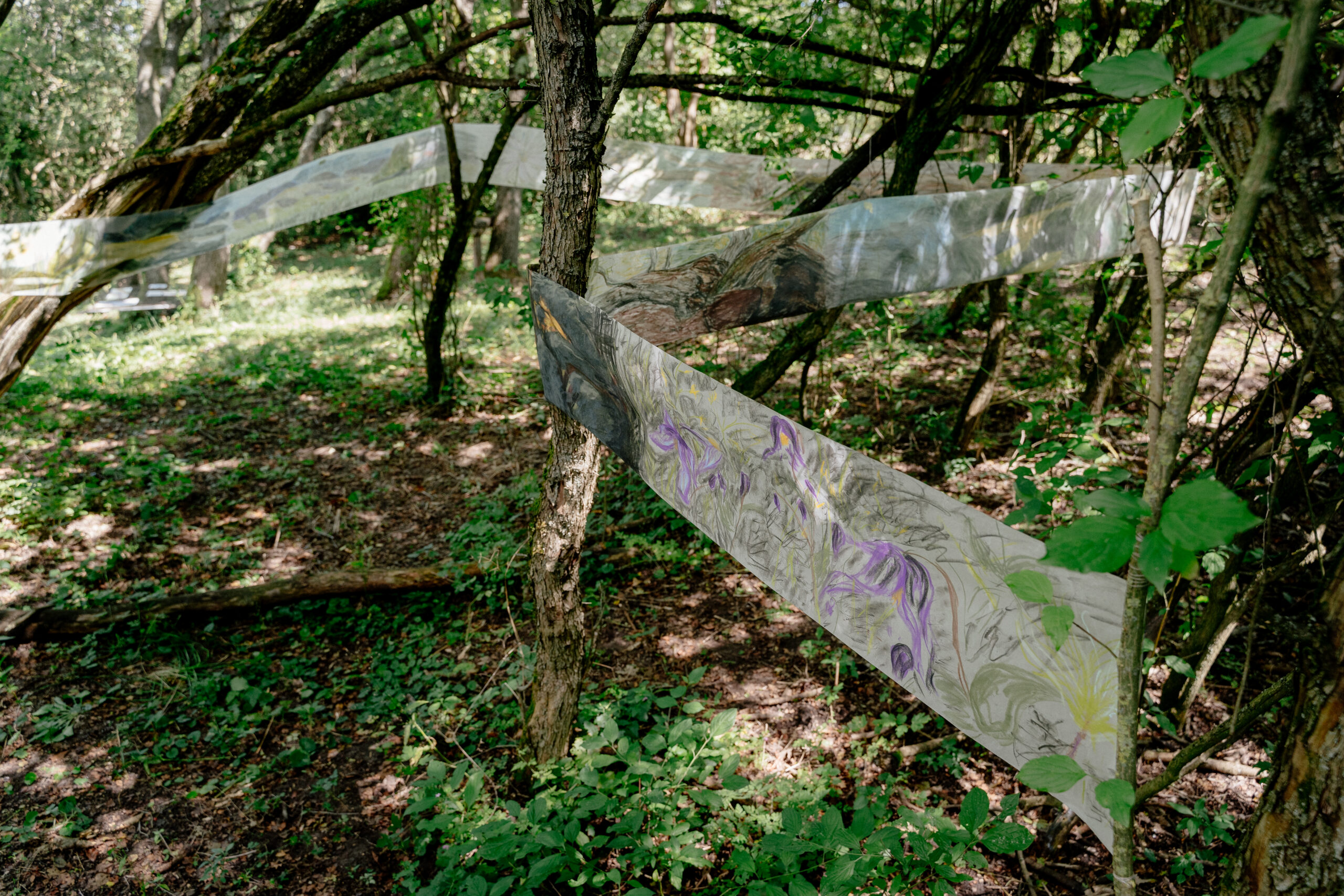
Indeed, during the two weeks, a sense of community was created that was so local and interconnected, attentive, affectionate and organic that it often felt like our lives depended on it. When we had to return to Budapest for a day or two – we felt as if we were doomed, torn from our natural habitat with such pain and incomprehension. Our presence, our perception, our state of mind changed, the mere act of being there became almost a work of art: we grew an aura.
However sincere and ambitious the initiative, there are many questions and unresolved issues surrounding this project, which is now three years old but still in its infancy. A group of young people involved in an art education that is resolutely classical and burdened by the conventions of the institutional framework of art, are moving out into the open space of a mother nature, swaddled with wild boars, to temporarily shed the institutional-structural constraints and create for the sheer joy of creating. In reality, however, it is difficult to free oneself from the doctrines that are stuck with us.
Can we be both legitimate artists and yet detached from all conventions? How do we install our objects in nature without turning it into an alternative white cube? How do we work in nature without exploiting it? What do we want to discard and what do we want to keep from the customary system of displaying works of art? Is l’art pour l’art, creation for its own sake, valid today? The place of meditation on these questions, however, was taken, if not intentionally, then clearly by the preparations for the first-ever Magyarkút Art Residency Festival, which followed the art camp.
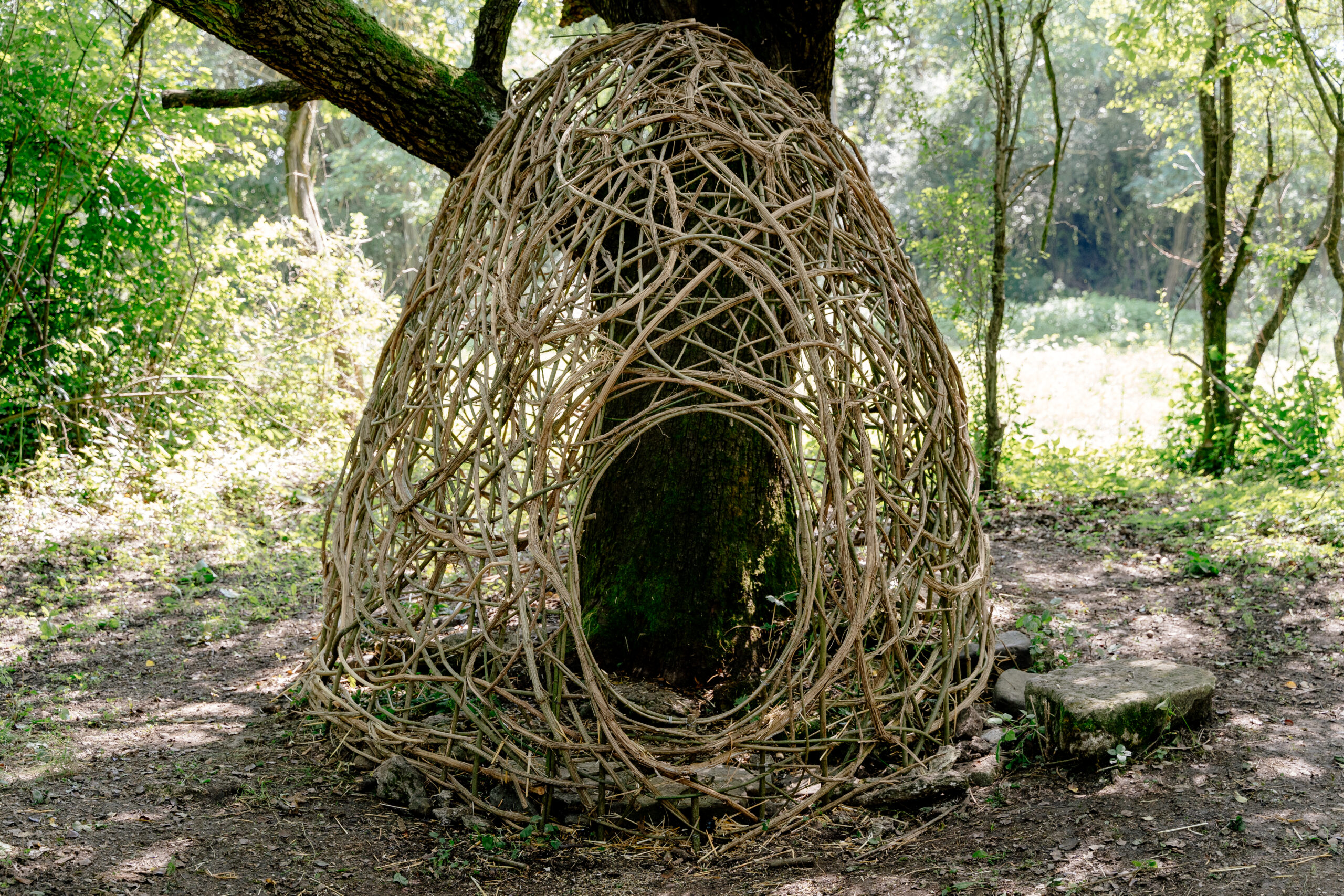
And although the ten days of rain did not make it any easier for the artists working outdoors, the participants successfully overcame the obstacles and the Symbiosis exhibition was built and opened on Friday 11 August. The outdoor exhibition was a surprise as individual works of art emerged from the trees. A wooden crocodile peeks out from under a bush, and we stumble upon an amphitheatre in the forest, where we take a seat on the steps and hear a raucous laughter from the forest – and we can’t stop laughing with it. We encountered sheet-ghosts stretched between branches, painted with plants, and sheet-paintings fluttering like ghosts. We saw oil paintings commemorating the ruins of last year’s art colony left in the woods, and then walked along a pastel panorama trail around the area, focusing more on the present.
Finally, we came to a woodland hut made of vines, which the ants had taken over on the first day. Vibrant colour-caps had moved onto the trunks of the trees, their branches supported by a row of branches. We could step through a weeping curtain into the sunset; we saw beeswax flies trapped in the light, clinging to beeswax paper; but we also saw the oil hands of a canvas, stretched up high, reaching towards the sun. Our communal meals were commemorated by a sheet woven from the garbage left over after cooking, and a giant paper roll used as a tablecloth during a dinner without any plates, and at the end of the road there was a real ornate brick oven, which, although not yet complete this year, will play an important role in the future.
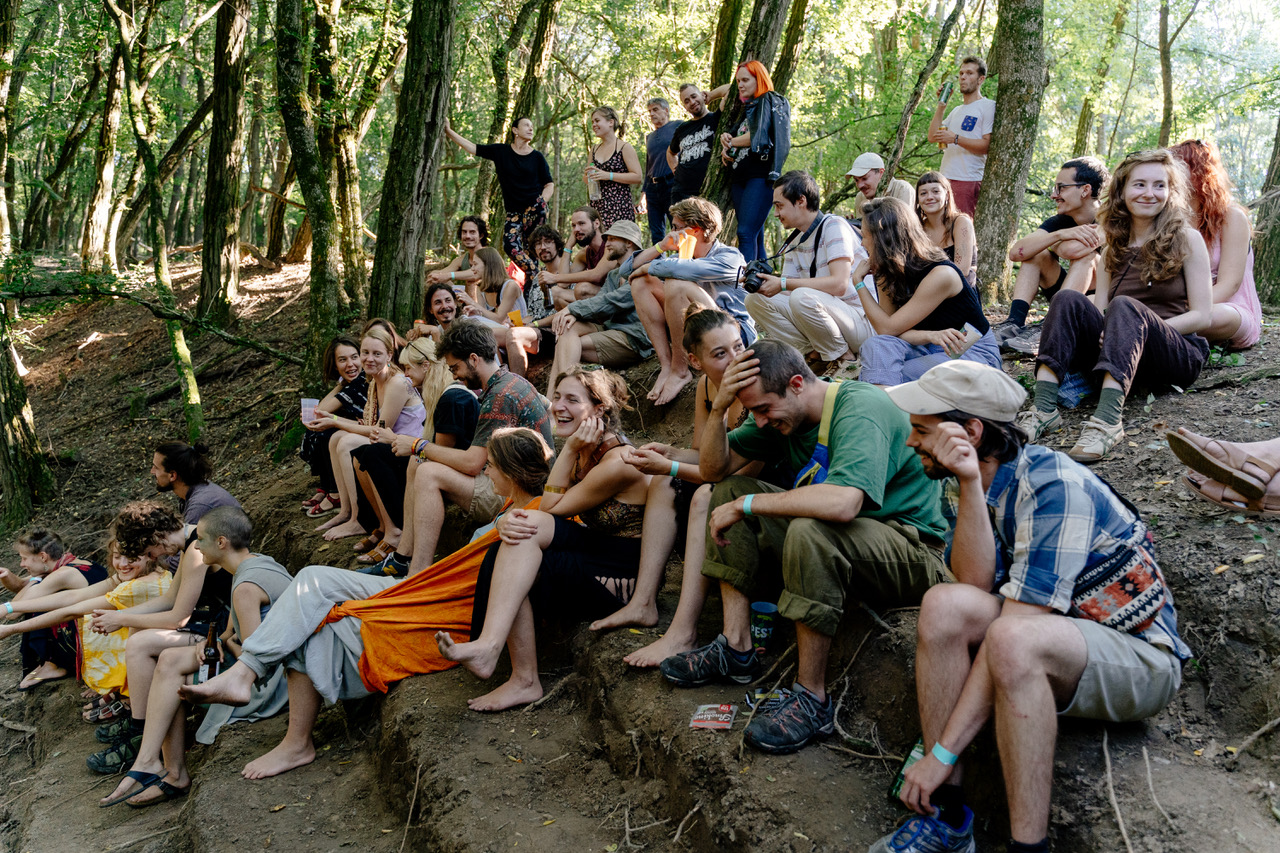
The works, although most of the participants came with a preconceived idea, changed even at the last moments, searching for their place. In their development, the sites chosen by nature and the artist, but above all, chance and unpredictability played a key role. That is truly nature’s own. All this was beautifully summed up in Anita Czakó’s hypnotic dance performance called Curiosity of Being, which opened the exhibition. The Magyarkút Art Residency truly celebrated the joy of creating freely, but even more so the pure joy of existence – and plans to do so again next year.
Translation: Juci Menyhért and Ewelinka Dochan.
The Symbiosis exhibition opening, which closed the art camp and launched the festival, took place on 11.08.2023. The exhibition was opened by Juci Menyhért, with performances by Anita Czakó, Guglielmo D’Ugo, Luca Falessi and Ilaria Maciocci.
Participants: Dominik Bárdi, Bora Bredár, Ewelinka Dochan (UK), Guglielmo D’Ugo (IT), Karina Dvožeckytė (LT), Luca Falessi (IT), Julia Fiutowska (PL), Lanuery Tom, Elia Latini (IT), Dani Laczkó, András Ladányi, Viola Lengyel, Ilaria Maciocci (IT), Kata Martincsák, Tekla Orbán, Sára Villő Szalka, Kamilla Szeli, Emma Teleki, Dominik Tonté.
Musical performers of the Arts Festival: Okos Viola, Dohányhangú Széplány, Őri-Kiss Botond, Hegymegett, Robert Holz (DE), Martonszabo, Ada Unn (FR), HÉBA, Csereszkorobár, Slight Right (DE), Cem Orlow (DE), Merker Vera, Leonard Lehmann (DE), Boró
The organizers of the 3rd Magyarkút Art Residency (31.07.2023 – 11.08.2023) and Art Festival (11.08.2023 – 13.08.2023) are Lisa Arnika Glauser, Sára Kautzky, Leonard Lehmann (DE) and Juci Menyhért.
The Magyarkút Art Residency is a self-driven initiative, if you like our work, here is how you can support the project.
You can follow Magyarkút Art Residency on Facebook and Instagram.
